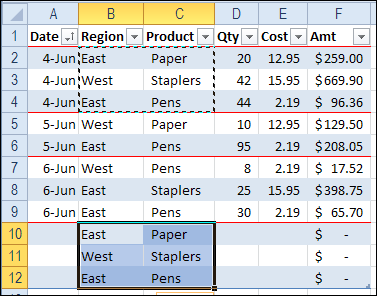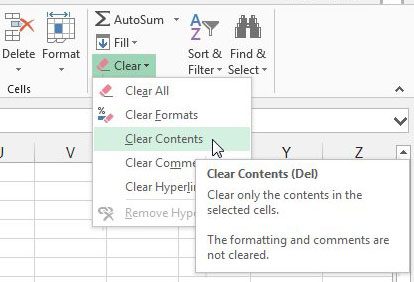

Please see section at the bottom of link. Recalculate formula used in conditional formatting. Summary is that in excel 2010, hitting shift F9 only recalculates formula in sheet.
Subscribe to get more articles like this oneĭid you find this article helpful? If you would like to receive new articles, join our email list.Hi FYI Conditional Formatting certainly does not work fine in Excel 2010 if the excel session is in manual calculation mode as for the majority of our users. You will now be able to sort, filter and create pivot tables with the list. In the example below, the Promotion field is filtered to display blanks: Click the Data tab in the Ribbon and select Clear in the Sort & Filter group to remove the filtering.Right-click one of the selected headings.Select the row headings of the filtered rows by clicking the first row heading and Shift-clicking the last row heading.You will likely need to scroll down to select Blanks. Click the arrow beside the field name with the blank cells in rows you want to delete.Alternatively, you can press Ctrl + Shift + L. Select Filter in the Sort & Filter group.Select the range of cells that includes all of the data in the data set (including blank rows).You can also delete blank rows using filtering (traditionally called AutoFiltering).

The Delete dialog box appears as follows:Īlthough you can also use the Find command to find blanks, it's much easier to use Go to Special.
Right-click one of the selected blank cells and select Delete. Excel will select all of the blank cells within the selected range. Select Blanks in the Go to Special dialog box and click OK. Alternatively, you can click the Home tab in the Ribbon and then select Go To Special from the Find & Select drop-down menu. Click Special to display the Go To Special dialog box. If there is sensitive data above or below the list that you don't want to delete, select the cells in the column from the first cell in the range to the last cell in the range (you could click in the first cell and Shift-click in the last cell). Select one column where there are blank cells in the column (we're assuming here that the rest of the row is blank). To find and remove blank rows using Go to Special: The Go To Special dialog box displays the following options: Deleting blank rows using Go to Special to highlight blanksĪ great way to remove blank rows in a range of data is to use Go to Special. Blank rows will now appear at the bottom of the data set and can be ignored.Ĥ. Beside Sort by, select the field or column with the blanks you want to remove and then select the appropriate sorting option (such as A-Z, smallest to largest, ascending or descending) to display blanks at the bottom of the data set. Assuming you have a header row, select My data has headers. Select Sort in the Sort & Filter group. Select the entire range of data (not just the column you want to sort). To delete multiple non-contiguous blank rows using a keyboard shortcut:Īn easy way to delete blank rows is to sort the data so that blanks appear at the bottom and you can then ignore them. Press Ctrl + – (minus sign at the top right of the keyboard) to delete the selected rows. To delete multiple contiguous blank rows using a keyboard shortcut: Deleting blank rows using a keyboard shortcut To select non-contiguous rows, click the heading of the first row and then Ctrl-click the headings of the other rows you want to select.Ģ. To delete multiple non-contiguous blank rows using the context menu: Drag across the row headings using a mouse or select the first row heading and then Shift-click the last row heading. To delete multiple contiguous blank rows using the context menu: Deleting blank rows using the context menu Click its heading or select a cell in the row and press Shift + spacebar. If you want to delete one row, you can delete the row manually: Recommended article: 15 Microsoft Excel Keyboard Shortcuts to Speed Up Formattingĭo you want to learn more about Excel? Check out our virtual classroom or live classroom Excel courses > You can also use many of these strategies with Excel tables. 
Excel recognizes data arranged in this way as a list or data set (or database). Here, we're assuming your data is in ranges of cells with data arranged vertically below row headings or field names (and no merged cells). In future articles, we'll take a look at other methods available in Excel 365. In this article, we'll focus on methods that work with all versions of Excel. Check out these 5 fast ways to remove blank or empty rows in your worksheets. You can delete blank rows in Excel using several tricks and shortcuts. Easy Ways to Remove Blank or Empty Rows in Excelīy Avantix Learning Team | Updated April 5, 2021Īpplies to: Microsoft ® Excel ® 2010, 2013, 2016, 2019 and 365 (Windows)







 0 kommentar(er)
0 kommentar(er)
